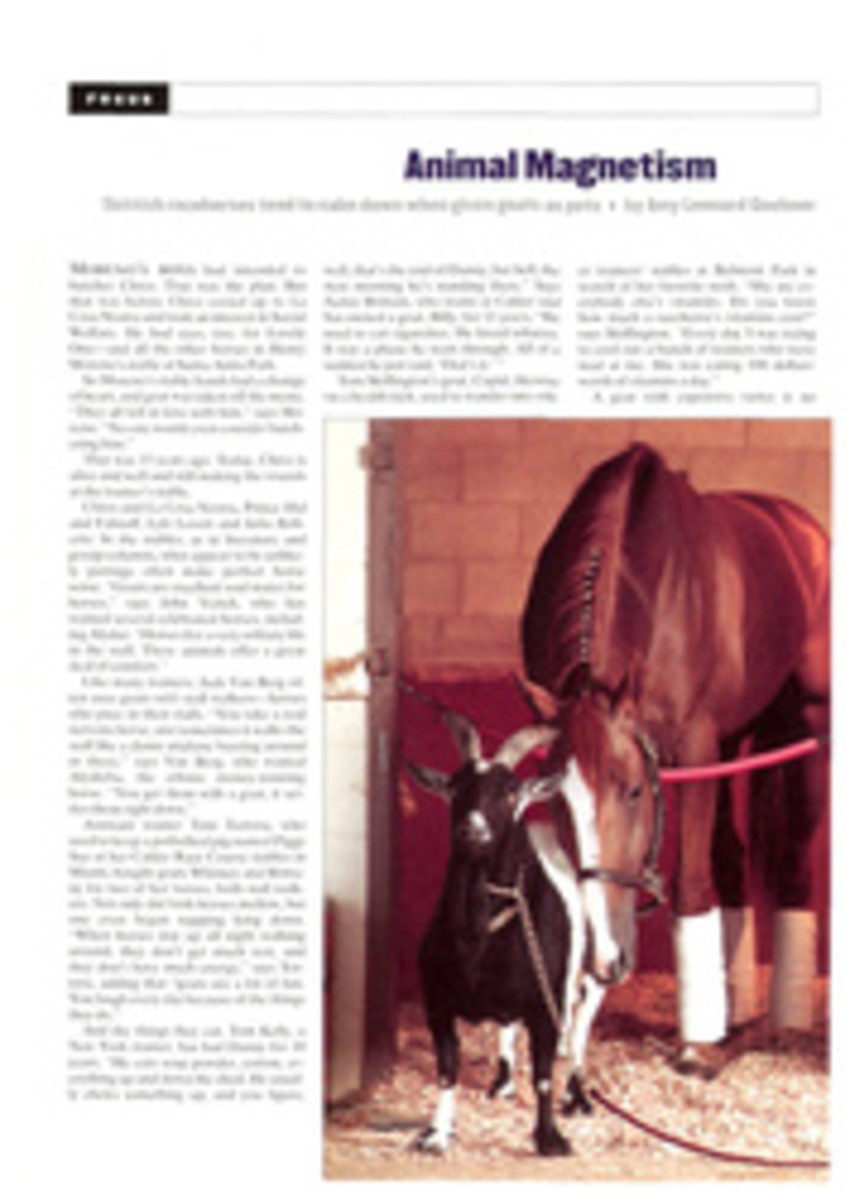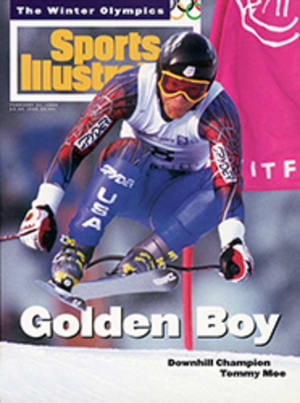
The Ice King
"Ice," says Dave King, "is an untapped and unappreciated resource." King is a director of the Mountain Bike School at Mount Snow in West Dover, Vt., and a pioneer in the slightly masochistic and more-than-slightly irrational sport of ice bicycling. He makes this pronouncement about ice's second-class status as he and two partners are preparing to cycle up 3,200-foot, ice-encrusted Rattlesnake Mountain in southern Vermont.
It is late February, generally prime ski season in the Northeast. But this is the first year since 1985 that the weather hasn't been a nasty cycle of torrential rain followed by below-freezing temperatures—conditions that produce vast quantities of glare ice. Skiers, hunters, hikers and most other outdoors enthusiasts are confirmed ice haters, but King has been a happy man these past few years. Such is his liking for ice that his friends have nicknamed him Klondike, after the frigid region of Canada's Yukon Territory. "There's a lot of people who have no idea what my real name is," says King, 39, an Abominable Snowman-sized cyclist who wears size 13EEE shoes and carries 215 pounds on his six-foot frame, half of it, seemingly, on his tremendously muscled thighs. The path up Rattlesnake looks as though it could be ascended only by a team of mountaineers. Where the route is steep, the ice is steel-blue and frozen in overlapping layers, like a multitiered waterfall. In flat, shady spots it is a somber gray, and where the sun breaks through the evergreens, the ice has formed a glass casing in which leaves and twigs a foot or more beneath the surface can be seen easily.
King and his fellow riders, ski patrollers Michael Piniewski, 37, and John Clark, 37, are using standard mountain bikes with one major alteration—each of their tires is studded with 364 small, sharp sheet-metal screws drilled through the tire from the inside. The screwheads are covered with a thick band of rubber to reduce the possibility of their puncturing the inner tube. The tires look like something punk rockers might use as hula hoops. As the trio of riders pushes off and cycles slowly up the first pitch, the tires grip solidly on the ice. Each rotation of the wheels produces a ripping sound like that of Velcro strips being pulled apart. The bikers' feat seems impossible, an illusion of sorts, as if someone were strolling casually up a vertical wall.
"The traction almost defies belief," says King. "It still amazes me every time I go riding. But the truth is that studs on ice give you better traction than rubber on dirt. The tires are just about flawless—the sport's limitations are attitudinal rather than technological. If you're daring, you can ice cycle up just about anything."
This doesn't mean ice cycling is easy. Rather, the sport is brutally tiring, far more so than mountain biking. Despite the superior traction of the wheels, if an ice cyclist becomes fatigued or loses momentum while climbing a steep pitch, he or she is in trouble. Stopping to put a foot down midway up a hill is potentially disastrous. To keep their feet warm, most ice cyclists wrap their cycling shoes in neoprene booties. These have absolutely no traction, and if they touch the ice, the cyclist instantly becomes a human hockey puck, skidding uncontrollably down the trail and, more often than not, right off the edge and into the woods.
Bloody knees and palms are unavoidable among ice cyclists, which is why some wear small spikes, known as ice creepers, strapped to the bottoms of their shoes. The benefit of these, though, is disputed, and in some instances creepers can even cause severe injuries during a spill. The best way to avoid a slide is simply not to put your foot down.
"If you're going up a steep pitch, you have to plan to gel to the top," says King. "No matter how long it is, you can't stop pedaling." Easy to say, but difficult to do. At the end of a steep climb, an ice cyclist's legs are, as they say in biker lingo, burnt toast.
Going downhill is even more absurd. The technique is the same as in mountain biking: your rear end all the way back, the seat pinched between your thighs. But the experience is far more dizzying. There is a rush of adrenaline as your bicycle whooshes over fields of ice, skidding around corners, your hands gripping the brakes in white-knuckled fear. And, of course, there is always the possibility that the ice will crack and your front wheel will plunge through. The result of this mishap is an "endo"—bike slang for end over end—and an array of nasty bruises. Helmets, obviously, are not optional. "A lot of the sport," says King, "is about ignoring common sense."
For ice cyclers Vermont is one of the nation's best places to disregard common sense. During the winter the state is chock-full of cross-country ski trails, snowmobile routes, frozen lakes and, especially in recent years, rock-solid ski slopes—all perfect places to ice cycle. There are also thousands of miles of so-called Class IV roads, abandoned 19th-century farming routes that connected farms and towns no longer on the map. Some of these provide excellent training routes for beginners, while other routes are more challenging.
King, who has lived in Vermont since 1972, is one of the East Coast's mountainbike gurus, both on ice and off. When he was introduced to regular mountain biking in 1982, he was out of shape and dangerously overweight. Within six months he had lost 75 pounds and was hooked for life. Six years later he helped found the nation's first mountain-bike school, located at the Mount Snow ski resort. He has taught thousands of students, written several instructional articles for magazines and is working on a mountain-biking book and video. But it took a few years of terrible weather—or at least what King then considered terrible weather—to nudge him into ice cycling.
In 1987, while working as a ski patroller during the long months between cycling seasons, he read a magazine story about ice cycling and decided to try it himself. He went to a hardware store, bought a box of sheet-metal screws and began making his own pair of studded tires. "It was like knitting," says King. "It took days and days for me to finish them, and I had no idea what to expect." The tires worked surprisingly well, and for King, bicycling suddenly became a year-round obsession.
Many ice cyclists are like King: former skiers who now complain when there is too much snow, which has a tendency to cover precious ice. Nobody knows quite how many ice cyclists there are in Vermont: Estimates range from a few dozen to several hundred, but everyone agrees the number is growing. One reason is that tires are now much easier to acquire—ice cyclists simply drop by Kevin Harrington's place to purchase a pair.
Harrington, 36, is the president (and sole employee) of Vermont Stud Service, the state's only studded-tire company. Harrington, who advertises in mountain-biking publications but relies largely on word of mouth, has seen his business double each year since he founded it in 1989. His office is a renovated milking room in an old barn in the hamlet of Pawlet. He makes two varieties of tires: 265 studs and 364 studs—the more studs the greater the grip on the ice—and sells them for $55 and $65, respectively.
Both Harrington and his wife, Kathleen, are avid ice cyclists, and the Harringtons' barn doubles as a hangout for local iceheads. Immediately after their conquest of Rattlesnake Mountain, King and his friends drop by for a visit. Ice cyclists seem to have a strange fondness for gory anecdotes, and the conversation for a while is about terrible falls and dramatic endos, and how best to wash blood out of your clothes. Then the cyclists begin planning a midnight ride, which will mean using lights mounted on handlebars or helmets. Finally, a radio is switched on, and everybody listens to the weather report.
"Freezing rain later tonight, with temperatures dropping into the teens by morning," says the forecaster, in a grave voice. The announcer warns people to stay off the roads if at all possible because of the danger of ice buildup. At this, everybody in the barn breaks into great whooping cheers.
PHOTO
MICHAEL PINIEWSKI
Before King discovered studded tires, Vermont's winters kept him off his bike until spring.
TWO PHOTOS
MICHAEL PINIEWSKI
Harrington's Vermont Stud Service is the place to pick up tires and to meet local ice cycling devotees.
Michael Finkel, who writes often on winter sports, survived his first attempt at ice cycling.

